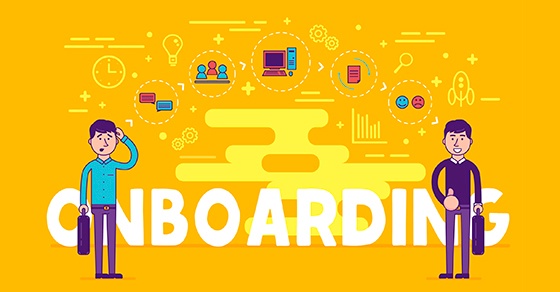Tuesday, May 1, 2018

Years ago, “onboarding” a new employee meant a quick tour of the workplace, brief introductions to a few co-workers and a stack of forms to fill out. Today, both corporate and household employers are catching on to the benefits of a well-planned and fully featured onboarding program.
Employment deliverables
Onboarding refers to “[a formal] process of helping new hires adjust to social and performance aspects of their new jobs quickly and smoothly,” according to the Society for Human Resource Management. A comprehensive onboarding program focuses on a number of employment deliverables, including:
- Stronger performance and productivity,
- Higher job satisfaction,
- Deeper organizational commitment,
- Reduced stress, and
- An enhanced sense of career direction.
It also provides the employer with the opportunity to be crystal clear about its compliance procedures, HR policies, and compensation and benefits offerings. Household employers can also use this opportunity to cover house rules, parenting philosophy, and any other specific requirement unique to household employment.
3 general phases
What does a comprehensive onboarding program look like? Specifics will depend on the size, industry and nature of the employer in question. Generally, an onboarding program can be segmented into three phases:
- Prestart preparation. The onboarding process should begin before a new hire starts work. This involves steps such as discussing his or her specific acclimation needs and choosing and preparing a work space. Household staffing professionals agree that a formal work agreement that spells out compensation and benefits, as well as specific duties and expectations is invaluable to insure that on day one you and your new employee are on the same page.
- Start date procedures. As the saying goes, “You never get a second chance to make a good first impression.” An onboarding program might involve an itemized start-date schedule that lays out everything from who will greet the new employee at the door to what paperwork must be completed to a detailed itinerary of meetings and one-on-ones throughout the day. Household employers can include things like directions to the park, any specific cleaning requirements, and a list of relevant contact information.
- Poststart coaching. Even a great first day can mean nothing if a new hire feels ignored thereafter. An onboarding program could establish continuing check-in meetings with the employee’s coach/mentor/employer for the first 30 or 60 days of employment. From then on, interactions with the coach/mentor/employer could be arranged at longer intervals until the employee feels comfortable.
An important concept
“Onboarding” may sound like jargon. But a failure to respect its importance can result in higher employee turnover, lower morale and weaker productivity. We have a variety of tools to help household employers ensure their employees are set up for success. Having a solid work agreement is a great place to start. You can also check out some tips on orienting your new nanny.
Resources
Why we love nanny work agreements - any you should too!
14 Key Parts of the Senior Caregiver Work Agreement